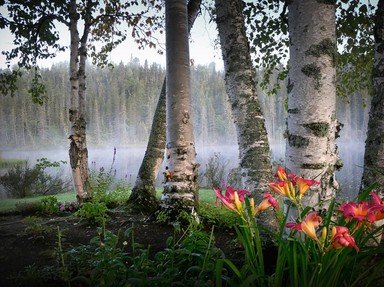Quiz Answer Key and Fun Facts
1. Most of the tallest living trees are conifers. The towering monuments of nature bearing mythical names such as Hyperion, Helios, and Icarus belong to which of these species?
2. Known as mountain ash or swamp gum, Eucalyptus regnans is the tallest of all flowering plants. What part of the world are these majestic trees native to?
3. Some tree species make up in girth what they may be lacking in height. One such tree is the enormous Árbol del Tule in Oaxaca (Mexico), whose trunk has a diameter of over 9 m (29.5 ft). What kind of coniferous tree, associated with mourning in some Western countries, is it?
4. India's iconic banyan trees boast some of the largest tree canopies, covering areas of thousands of square metres/feet. Which of these facts about the banyan is NOT true?
5. Trees can live for thousands of years. Some of the oldest living trees belong to the aptly-named species Pinus longaeva, or Great Basin bristlecone pine - found in which part of the world?
6. The European continent boasts its share of "tree kings". One of these is the common, or European, yew, a conifer that can live for centuries, and whose trunk can reach very respectable girths. What else is remarkable about this iconic tree?
7. What beautiful tree, native to Eurasia, but widely cultivated in the temperate regions of the world for its delicious seeds and durable wood, is very long-lived - with some specimens believed to be over 2,000 years of age?
8. A tree is defined as "large" in relation to the volume of wood in a single stem. Kauri trees - such as the massive Tāne Mahuta, or "God of the Forest" - rank quite high in the largeness stakes. In which island country would you find kauri?
9. The tropical silk cotton tree can grow to a height of over 70 m (230 ft). Its most salient feature, however, are the huge, extensive roots that support the trunk. What name - which might remind you of Gothic architecture - is given to these roots?
10. Not surprisingly, conifers boast the thickest bark of all tree species. However, the prized bark of what non-coniferous tree native to the Mediterranean basin can grow as thick as 20 cm (8 in)?
Source: Author
LadyNym
This quiz was reviewed by FunTrivia editor
rossian before going online.
Any errors found in FunTrivia content are routinely corrected through our feedback system.
